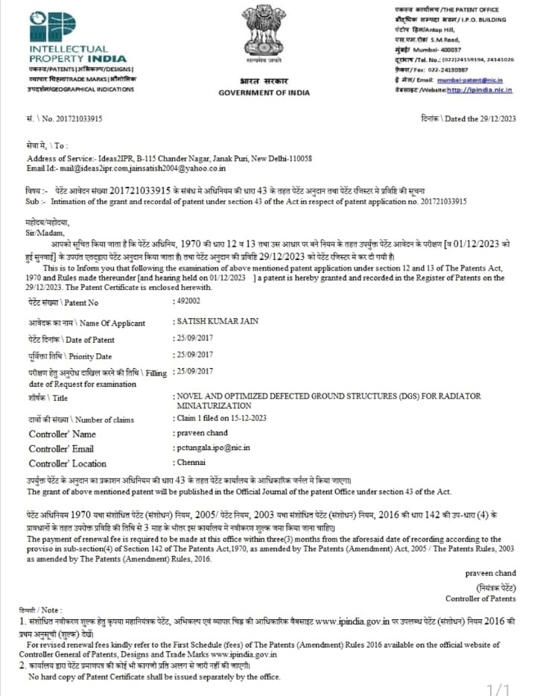An awardee of the prestigious Rutherford Discovery Fellowship, the epigenetics expert aims to spread his research for the welfare of cancer patients
When Aniruddha Chatterjee, assistant professor at the University of Otago, Dunedin, was named as one of the 10 recipients to be awarded a 2017 Rutherford Discovery Fellowship, the first thought was to help cancer patients across the globe including his home country India.
Aniruddha has been working on the Methylation of DNA, which can control the behaviour of DNA code in a cell, crucial for cancer treatment. For someone dreaming of research to support the medical fraternity, the breakthrough in research is no mean feat.
As a 25-year-old intern at an IT (Information Technology) company in Coimbatore, Aniruddha realised his heart lies in research. Not satisfied with the routine IT job, Aniruddha started to explore opportunities in research, with multiple offers pouring in from Europe. The volume of research conducted at the University of Otago and the attractive scholarship prompted him to work in serene Dunedin for his PhD in 2009. “Prof Ian Morrison was the main reason to finalise my decision. He was reassuring and showed complete faith in me. I was allowed to do clinically relevant human projects,” Aniruddha tells Education Times.
The combination of Informatics computers which was new back then was exciting, he says. Furthermore, a scholarship to work with Prof Mike Nicholas and at the New Zealand Cancer Institute were irresistible offers that followed.
For a boy born in a family with modest means in Berhampore, West Bengal, who studied in Bengali-medium government schools, the journey was glorious. Aniruddha’s father, a government school headmaster, ensured a strong academic environment in the house, resulting in brilliant academic achievements of his children.
Aniruddh worked on a few projects after completing his BTech (Biotechnology) from Osmania University, and master’s from VIT (Vellore Institute of Technology), Vellore. After facing the initial struggles involving adjustment to the local culture, battling homesickness, and embracing the research process, Aniruddha went on to achieve Rutherford Discovery Fellowships administered by Royal Society Te Aparangi in 2017, which offered funding of $800,000 to be used for research for five years.
The fellowship fund helped him set up the Chatterjee labs at the University, which is now a platform focusing on epigenetic alterations in cancer metastasis. The lab consists of 15 researchers from India, Iran, and Nigeria, working on tackling bowel cancer which is a dreaded disease not only in New Zealand but also all over the world. Aniruddha along with Dr Euan Rodger and Dr Rachel Purcell had their findings published in iScience, which explains the research that identified a feature that allows bowel cancer to spread to the liver.
“It is a very promising area to work on as it tackles cancer in many ways. I am happy that the research is of great significance in India and other parts of the world,” says Aniruddha. Population-specific epigenetic data is very limited and the more we generate, the more we can understand disease (cancer in this case). The research is of significance as it will help the patients in early detection, monitoring and timely treatment, adds Aniruddha.
“Our lab combines cutting-edge next-generation sequencing, computational analysis, and experimental work to decipher the role of epigenetic code in cancer, focusing on DNA methylation,” says Aniruddh.
Chatterjee lab is studying DNA methylation levels in cancer cells and patient tumour samples and it has the potential to understand the aggressive nature of cancer and utilise the knowledge for patient benefit. The researchers are working to assign function to every single methylation change that could occur in a cancer cell so that ultimately epigenetic changes could be used to predict and prevent disease. “Our work will contribute to detecting cancer early, predicting treatment response and providing new ways of treating cancer to improve patient outcome,” says Aniruddha, who aims to expand his work by collaborating with Indian researchers.
source/content: timesofindia.indiatimes.com (headline edited)
